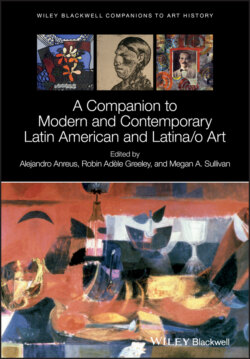Читать книгу A Companion to Modern and Contemporary Latin American and Latina/o Art - Группа авторов - Страница 43
Notes
Оглавление1 1 For the sake of clarity, I expound this book as if it were a treatise, even though Mariátegui does not sustain any single argument throughout its pages and each essay can be read on its own. It should be noted as well that, before the publication of Mariátegui total (1994), the essays composing The Morning Soul had already appeared in three separate volumes of the standard pocket edition of his Complete Works: El alma matinal y otras estaciones del hombre de hoy (1959b [1950]), El artista y la época (1959c), and Signos y obras (1959d). In what follows, I use the title The Morning Soul as referring to the overall content of those three volumes, thus adhering to Mariátegui's original intention. All translations are mine unless otherwise noted. Whenever existing translations in English are used, the original sources are also listed for reference.
2 2 See Schutte (1988) and Nugent (1991), pp. 16–29.
3 3 It is perfectly possible to argue, as Flores Galindo (1980) has done, that Mariátegui's thought possesses a “utopian dimension” if “utopia” is roughly taken to mean the desire to create a different society, beyond the barriers imposed by common sense and politics as usual. But this conceptualization, rather vague and general, misses a key aspect of utopian thinking, namely the opposition between reality and reason – between chaos and perfection – that marks it off from other approaches to social change. All utopian projects aim to revolutionize the social order, but not all revolutions are committed to the ideal of the perfect society.
4 4 It is worth noting that this condemnation of “educational solutions” was not motivated by a rejection of the cultural assimilation of the Indians (i.e. the fear that they would lose their cultural identity), but by a hostility to liberal reformism. It would therefore be a mistake to turn Mariátegui into something of a precursor of US‐style identity politics.
5 5 Mariátegui wrote about only two other Latin American visual artists: Emilio Pettoruti (1959c, pp. 86–90; 1994, Vol. I, pp. 581–583) and Julia Codesido (1959c, pp. 97–98; 1994, Vol. I, pp. 586–587). In both cases he provided personal impressions rather than critical analyses.
6 6 The version originally written by Breton, as he would admit with some embarrassment (1995, p. 45), contained a clause that Trotsky unhesitatingly crossed out: “Complete freedom for art, except against the proletarian revolution.”
